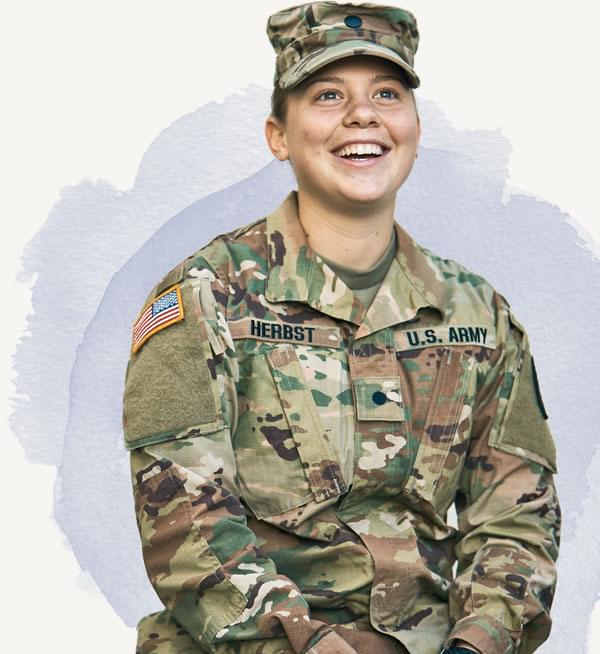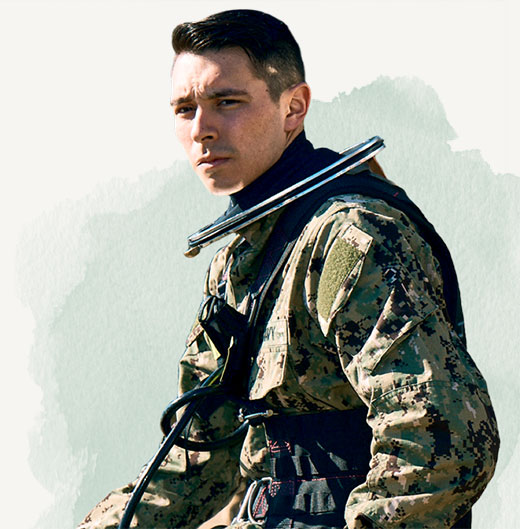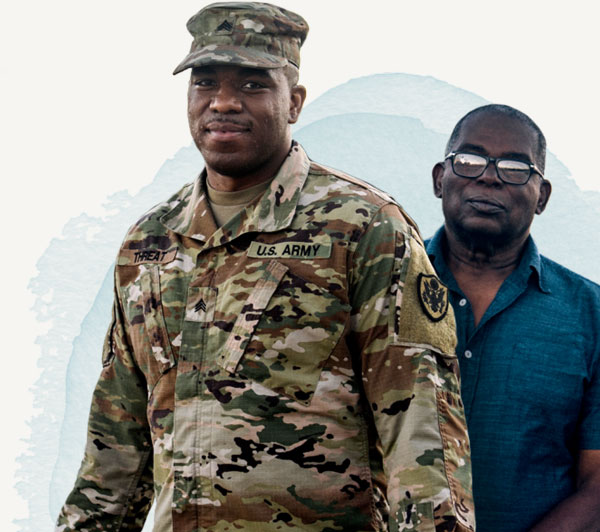Life in the Military
Housing
Generally, housing is provided for all active duty service members, whether they’re living on or off base. There may be exceptions to this rule, which you can discuss with a recruiter. Otherwise, with the abundance of housing options, most service members will be able to find housing that fits their needs.
Basic Training Barracks
During Basic Training, men and women live in separate quarters, which consist of shared bunks and bathroom facilities. Because service members are there for training, personal items are kept to a minimum, and everything happens on a set schedule, allowing service members to focus on learning and working as a team.
Single Service Member Dorms, Barracks & Apartments
As service members move up in rank, they get more housing options to choose from, if available. Junior single service members can live in complexes that resemble a modern college dormitory, which could consist of a single or shared room with a shared living area.
Transcription
Related Videos
Living in the Barracks
Living in the Barracks
Inside the Air Force Enlisted Dorms
Inside the Air Force Enlisted Dorms
Family Housing
Senior service members, those who are married, or those who have physical custody of dependents can select from a variety of apartments and single-family homes. Like most family-oriented dwellings across the nation, these units can include multiple bedrooms and bathrooms, with garages and yards as well.
On-Base Family Housing
Hear from a young military family about their experience living on base and how they value family-friendly conveniences, comfortable amenities and a social neighborhood within their welcoming community.
Length 1:41 View TranscriptTranscription
My name is Tasha Anna Williams and I'm a specialist in the US Army. My name is Dante Williams and I'm also a specialist in the US Army. We've been together for almost seven years and we've been here for about three years now.
There are plenty of housing options on base for families. We got the option of choosing between three different communities. We chose to stay in Liberty woods here and Fort Stewart.
We currently live in a four-bedroom townhome. It has a living room, the kitchen area, in the dining area upstairs we have four bedrooms with our kids room our master bedroom. The guest bedroom and Dante's mancave. So we have quite a bit of space that we can just be comfortable. In living on base is important to me because I can get to work in like five minutes from the commissary, is right there, so everything that we need is here on base.
Quite often we have barbecues or we grill out and we either do it at the neighbor's house or our House. And they just bring their kids over and their families over and we just you know relax and watch the game and eat some barbecue. The things that I enjoy for the kids and there's a playground at every spot we can go to either the one down the street or take them to everyone around the corner and so it's a variety of things that the kids can do. My kids are really happy here, they love playing in the backyard and every time they see somebody out the window they're like mommy my friends playing outside when I see my children happy it makes me happy.
On-Base Family Housing
Living off Base
Service members who qualify to live off base are given a Basic Allowance for Housing (BAH) as part of their compensation. BAH is a monthly sum of money that takes into account the area’s cost of living as well as a service member’s pay grade and number of dependents.
For example, if a service member is stationed in an expensive urban area, they’ll receive more than a service member living in a rural area where the cost of living is less expensive. Similarly, a service member who is married with children would receive more than a single service member.
Ultimately, BAH ensures that everyone gets the allowance they need to cover their living situation.
Living Quarters at Sea
While not exactly “on base,” service members (especially in the Navy and Coast Guard) may be assigned to vessels like ships or submarines for extended durations of time. Here, sufficient living spaces include berthing (sleeping) areas with storage, an assigned rack for sleeping, and crew lounges to relax while watching TV or playing games.
Housing for National Guard & Reserve
While active-duty members join the Military on a full-time basis, National Guard and Reserve members serve in a part-time capacity and live in housing within their civilian communities. During drill training, which occurs one weekend per month, with a two-week commitment per year, these service members are provided housing.
Guard members and reservists who are entitled to a housing allowance will receive a special BAH any time they’re on active duty for fewer than 30 days. If they are on active duty for 30 days or more, they’ll receive the full housing allowance rate (the same as active duty).
Pet Ownership
In general, service members are allowed to have pets such as dogs, cats, fish and other common companions on base. In fact, many installations often have amenities to ensure our animal friends stay happy and healthy — like veterinary clinics, dog parks and even boarding facilities.
However, it is important to note that certain pet species and breeds are forbidden, and animals that are permitted are restricted to apartment complexes and single-family housing, as pet ownership in barracks and dorms is not allowed.
Speak with a recruiter if you have any specific questions about pet ownership, as guidelines can vary from base to base.
Pet Ownership
It’s a common misconception that having a pet in the Military isn’t allowed. This couldn’t be further from the truth. This video explores how many military posts provide helpful services for service members and their pets.
Length 1:15 View TranscriptTranscription
I got shiner after I had already joined the military. I got him about six years ago and I've been in the military for eight years now. Things like to do with shiner on basis I like to take him over to the dog park. Let him run around throw the ball for Him. I'll take him you know to the pond sometimes he likes riding in the back of the truck. You have to check with your specific housing to see which pets are allowed for example they don't allow pets in the barracks. But currently in the apartment complexes, I believe it's just dogs and cats. I do feel fortunate to have amenities on post they have not only a vet but also a boarding facility on post everybody that works there is super nice and just makes the whole process a lot easier. I think people think that you can't have a pet in the military because people think when they go into the military they just are always deployed or never home but that's not true just like having a pet as a civilian. It's important to me that shiner has a good life because he keeps me centered and happy he brightens my day when I get home.
Pet Ownership
Hosting Visitors
Service members are typically allowed to have visitors on base once they complete Basic Training. Although guests are not allowed to stay overnight in the barracks, many large installations offer convenient on-base hotel accommodations.
Please note that military bases are secure installations, so proper ID and an invitation/sponsorship from a military or DoD member is required for guests. While on base, visitors are expected to follow the same rules as all base residents.

















